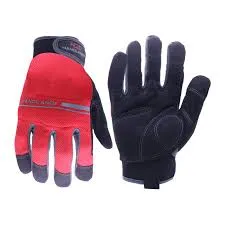Optimal Type 1 Safety Helmets for Maximum Protection and Comfort
The Best Type 1 Safety Helmet Ensuring Protection and Compliance
Safety is paramount in various industries, particularly in construction, manufacturing, and outdoor labor. One of the most crucial pieces of personal protective equipment (PPE) is the safety helmet. Among the different types available, Type 1 safety helmets stand out due to their ability to provide reliable protection against vertical impacts. This article explores the features, benefits, and regulations surrounding Type 1 safety helmets.
What is a Type 1 Safety Helmet?
Type 1 safety helmets are specifically designed to protect the head from falling objects and impact from above. They are constructed to meet specific regulatory standards that ensure their effectiveness in preventing injuries. According to safety standards set by organizations such as the American National Standards Institute (ANSI) and the Occupational Safety and Health Administration (OSHA), Type 1 helmets must undergo rigorous testing to ensure their strength, durability, and overall protective capabilities.
Key Features of Type 1 Helmets
1. Impact Resistance The primary function of Type 1 safety helmets is to absorb impact energy. They are usually made from high-density polyethylene (HDPE) or other robust materials designed to withstand significant force. This makes them ideal for environments where there is a risk of objects falling from above.
2. Comfort and Fit A good safety helmet should provide a secure fit without compromising comfort. Type 1 helmets often include adjustable suspension systems that allow users to customize the fit to their head size. Many models also come with ventilation holes to enhance airflow, reducing heat buildup during prolonged use.
3. Moisture Management On jobsites where sweat can accumulate, many Type 1 helmets feature moisture-wicking liners that help keep the user dry and comfortable, enhancing overall productivity.
best type 1 safety helmet

4. Visor and Accessory Compatibility Many Type 1 helmets are designed to accommodate additional safety accessories such as face shields, earmuffs, and reflective stickers. This versatility makes them suitable for various applications and industries.
5. Color and Visibility Safety helmets are often available in bright colors to improve visibility and safety on job sites. Some employers may require specific colors to demarcate roles or levels of experience among personnel.
Regulatory Compliance
To ensure safety and compliance in the workplace, employers must adhere to regulations that govern the use of safety helmets. The ANSI Z89.1 standard categorizes helmets into two types Type 1 and Type 2. Type 1 helmets are designed for top impact protection, while Type 2 helmets also offer lateral impact protection. Organizations must choose the appropriate helmet type based on the specific hazards present in their workplace.
Proper training on the use and maintenance of safety helmets is also crucial. Employees should be educated on when to replace their helmets, as prolonged exposure to sunlight, chemicals, or physical damage can compromise their protective capabilities.
Conclusion
Type 1 safety helmets represent a critical component of workplace safety gear, particularly in environments where there is a risk of falling objects. Their robust design, comfort features, and compliance with safety standards make them a reliable choice for employers looking to protect their workforce. As safety regulations continue to evolve, it is essential for companies to stay informed and ensure that they provide their employees with the best possible protective equipment. By investing in quality Type 1 safety helmets, organizations can not only ensure compliance but also foster a culture of safety that prioritizes the well-being of all workers.
-
Top Safety Clothing with AI-Driven Protection
NewsAug.02,2025
-
Top HDPE Safety Helmets - Lightweight, Durable Head Protection
NewsAug.01,2025
-
Top AI Safety Clothing with GPT-4 Turbo | Smart Protection
NewsJul.31,2025
-
Face Shield Safety Helmet with GPT-4 Turbo AI Safety
NewsJul.31,2025
-
CE Working Clothing for Construction & Welding Safety
NewsJul.30,2025
-
Premium Safety Helmet with Visor for Construction & Industrial Use
NewsJul.29,2025
